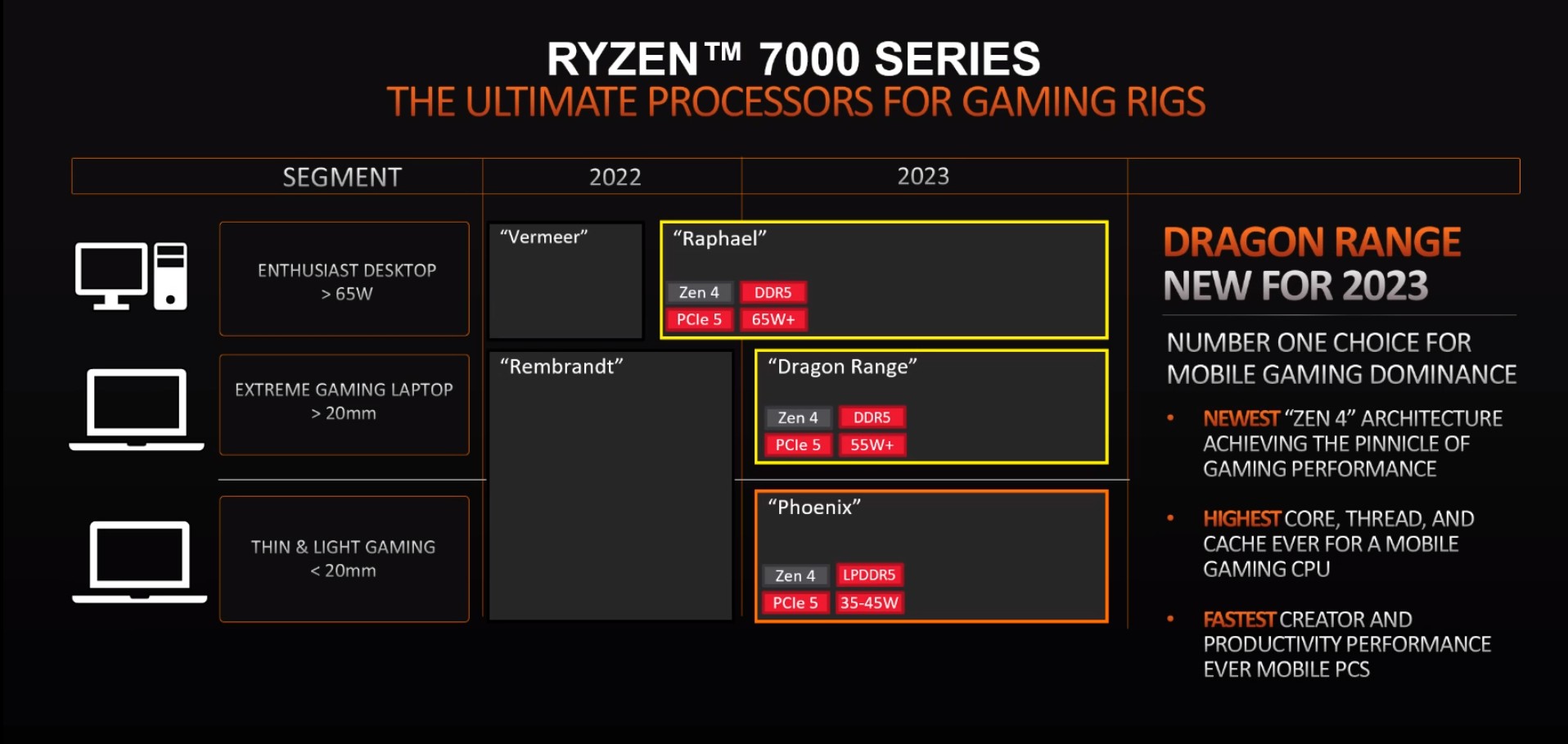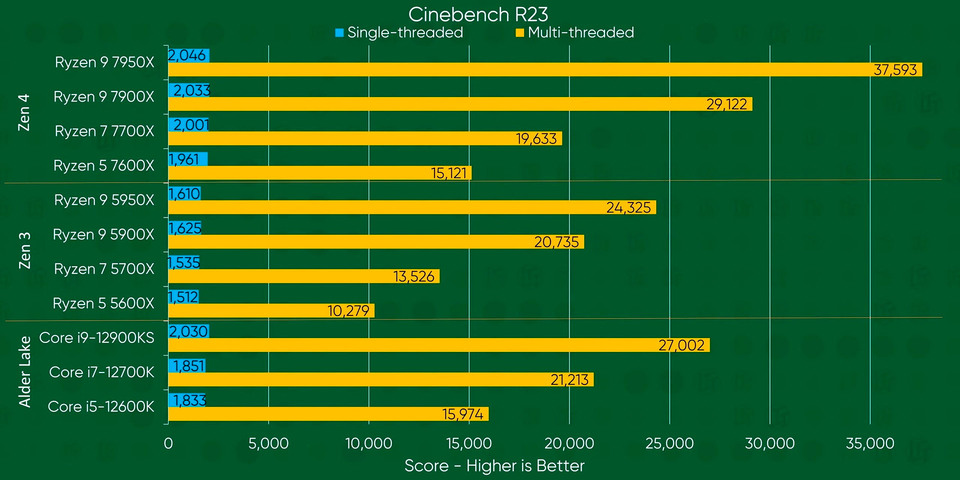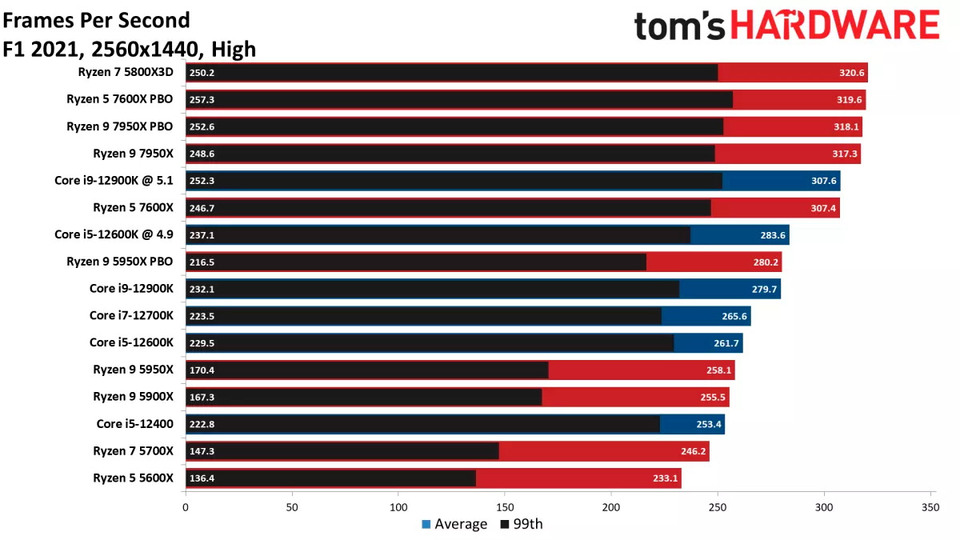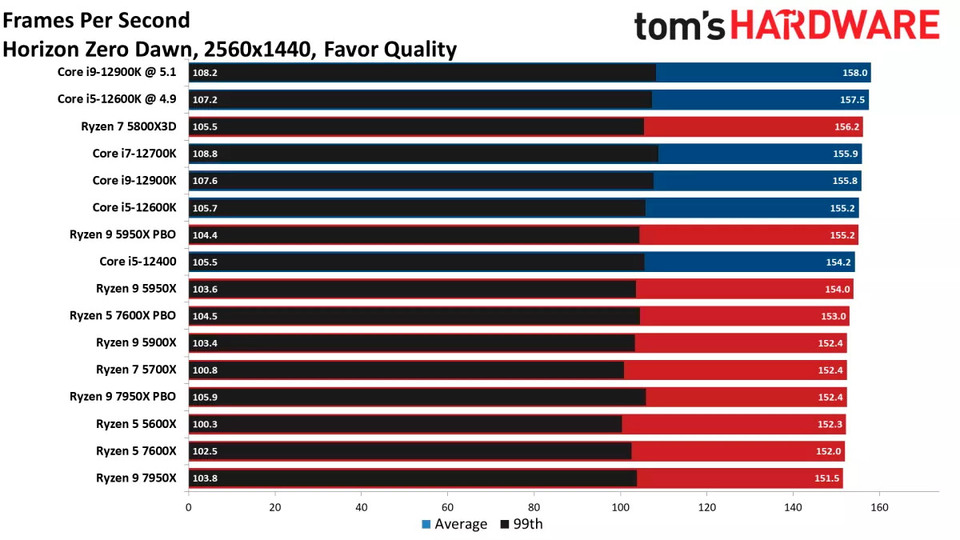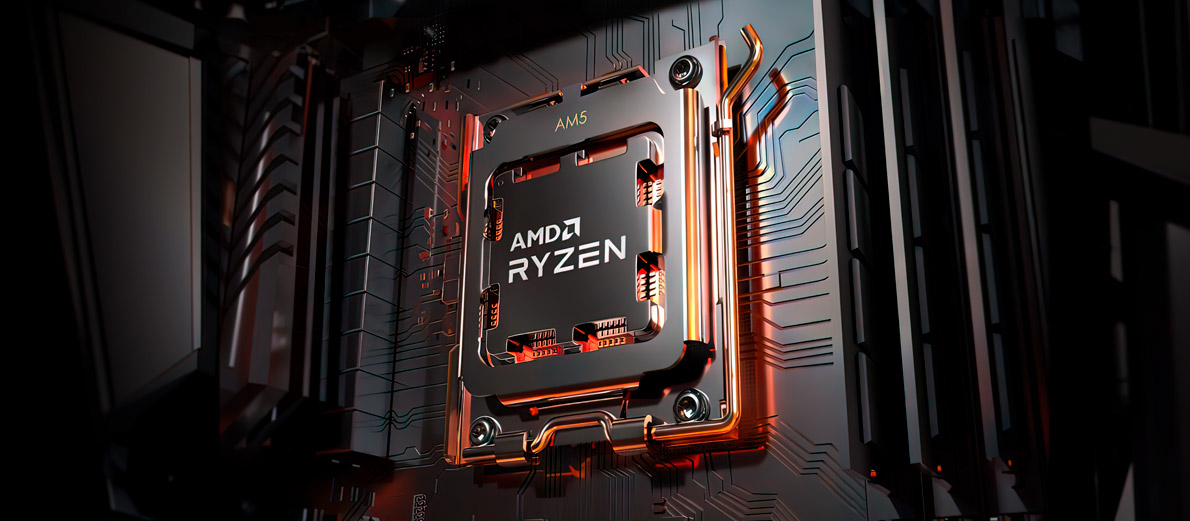
Description
Each year, AMD processors become more powerful, and the gap with Intel devices becomes less convincing. This autumn, the 7000 series CPUs were released, replacing the successful Ryzen 5000 series. They are built on a new architecture and for a new socket. The main distinguishing features of the new processors are as follows:
- Zen 4 architecture
- AM5 socket
- DDR5 support
- Twice the L2 cache size
- Integrated graphics across the entire series
- PCI-e 5.0 support
The new line is manufactured using a 5 nm process, which increases transistor density by 80%. This process has allowed the processors to become more powerful while reducing power consumption by a third compared to the previous generation. A downside is that this architecture completely abandons support for the DDR4 standard.
Zen 4 also supports the AVX-512 instruction set, which is a significant feature for the server segment, and will also enable home computers to support an additional set of operations.
The new AM5 socket features a different packaging – LGA ZIF, where the contact pins are moved from the chip to the socket. The good news is that cooling systems for the AM4 socket are compatible with the AM5 platform.
Additional costs will be required for the new motherboard. The previous socket lasted for 6 years (which is quite a long time), and the new one has not proven itself yet. However, AMD promises to continue supporting the previous generation with updates until at least 2026.
The high-end processors will be paired with new motherboards featuring three new chipsets: B650, X670, and X670E. The first is the basis for relatively budget builds, it does not support overclocking and has a limited PCIe bus. The last one is an excellent option for overclockers aiming for maximum CPU overclocking and full PCI-e 5.0 support. X670 is a middle-ground solution, where some features of the senior chipset are trimmed.
Integrated graphics will be output through HDMI 2.1 and DisplayPort 2. The graphics core is present in all models, allowing the new series to eliminate the “G” marking. It is based on two RDNA2 cores, with frequencies ranging from 400 MHz to 2200 MHz, generally matching the Vega 8 graphics performance.
The product line will include:
- Ryzen 5 7600X (6 cores)
- Ryzen 7 7700X (8 cores)
- Ryzen 9 7900X (12 cores)
- Ryzen 9 7950X (16 cores)
All new models show a significant increase in performance and a reduction in power consumption, but in terms of operating temperatures, they are still quite power-hungry.
As before, CPUs are chiplet-based, and heat dissipation is handled by special solder, which prevents overheating when there is insufficient contact with the processor lid.
The Ryzen 7000 series consists of three lines:
- Phoenix
- Dragon Range
- Raphael Phoenix
The first is intended for energy-efficient devices (entry-level and mid-range laptops). The second is for high-performance laptops and gaming consoles, and the third represents the core of desktop builds, which were released first.
Later, the series will include processors with enhanced graphics cores (3D V-Cache), but these will be released slightly later than the main lineup.
Specifications
The flagship CPUs of the series will be the Ryzen 7 7700X and Ryzen 9 7950X, with their comparative characteristics listed in the table below:
| Specifications | AMD Ryzen 5 7600X | AMD Ryzen 7 7700X | AMD Ryzen 9 7900X | AMD Ryzen 9 7950X |
|---|---|---|---|---|
| Cores/Threads | 6 / 12 | 8 / 16 | 12 / 24 | 16 / 32 |
| Base/Boost Frequency | 4.7 / 5.3 GHz | 4.5 / 5.4 GHz | 4.7 / 5.6 GHz | 4.5 / 5.7 GHz |
| L2 Cache | 8 MB | 8 MB | 16 MB | 32 MB |
| L3 Cache | 32 MB | 32 MB | 64 MB | 64 MB |
| TDP | 105W | 105W | 170W | 170W |
| Max Temperature | 95°C | 95°C | 95°C | 95°C |
The increase in the number of cores, as in the past, did not occur, as the 8-core and 16-core devices fully handle any load presented by the world of video games and computer technology in 2022-2023.
The Zen 4 architecture itself provides a 13% increase in IPC, and the high clock speeds of the 7000 series provide an overall performance gain of 29% per thread.
One distinctive feature of all 7000 series processors is the high performance of each core, unlike competitors, where half of the cores are performance cores, and the other half are energy-efficient.
The chips have a built-in overclocking system that allows for significant performance gains but will require good cooling from the user, preferably liquid cooling.
Tests
Synthetic
According to synthetic tests, overall performance in resource-intensive tasks and applications increases by a substantial 30-40% compared to the previous generation. These results were confirmed in benchmarks: Cinebench 23, Blender Benchmark.
The “synthetics” showed an improvement in single-thread and multi-thread performance, surpassing almost all previous-generation Intel processors by 30% and most new-generation CPU competitors. Only some models are slightly behind their competitors in efficiency, while significantly winning in price.
Gaming
Gaming tests show mixed results, according to independent assessments, the 7000 lags behind Alder Lake, but not significantly. Surprisingly, they lag behind even their own previous models, particularly the Ryzen 7 5800X3D. It is quite possible that the flagship gaming model of the new series will be released a little later, just like the 5800X3D.
The integrated graphics did not deliver impressive results, but it was never intended as a high-end gaming solution, only as an entry-level option. Initially, the graphics core will be able to handle non-demanding tasks while the user saves for a good graphics card.
The entire seventh generation processor lineup is quite hot, and when performing resource-intensive tasks, their temperature can reach 88 degrees, despite good air cooling using tower coolers.
Based on publicly available tests, we can confidently say that “red” processors outperform their main competitors in some cases, while “blue” processors will need to catch up.
Release Date
The Ryzen 7000 semiconductors began selling in late September 2022, with versions featuring improved graphics cores expected to be released early next year.
Price
AMD has always demonstrated a conservative pricing policy, which for many years was their main advantage. With the release of the new processor series, the company has stayed true to itself, and the listed prices are as follows:
- Ryzen 5 7600X – 299$
- Ryzen 7 7700X – 399$
- Ryzen 9 7900X – 549$
- Ryzen 9 7950X – 699$
The official price in Russia for the new CPU lineup is still unknown.
HYPERPC Computers with AMD Ryzen 7000
You can equip your gaming PC or workstation with this processor family at HYPERPC. Choose from a selection of ready-made computers balanced for performance, or create your own configuration with top AMD Ryzen 7000 processors.
